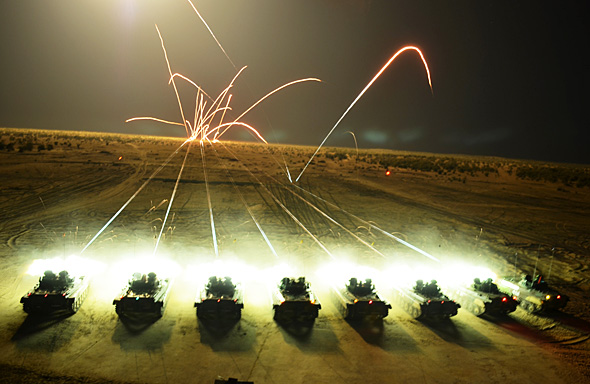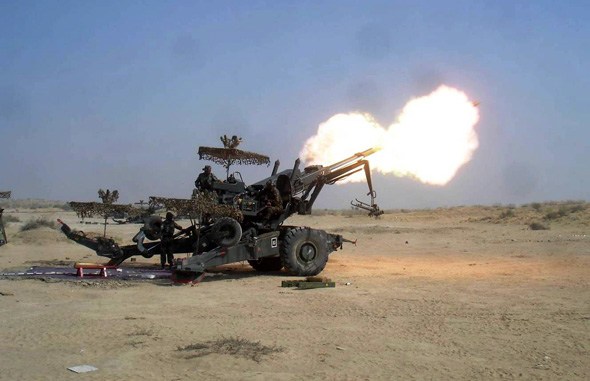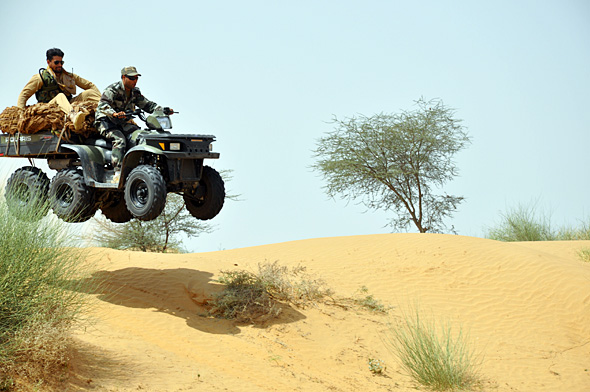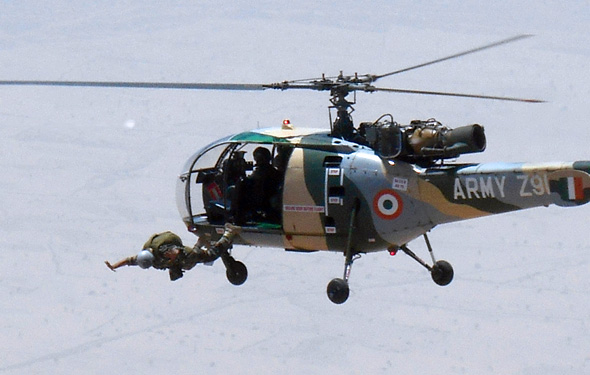INDIAN ARMED FORCES CHIEFS ON
OUR RELENTLESS AND FOCUSED PUBLISHING EFFORTS

SP Guide Publications puts forth a well compiled articulation of issues, pursuits and accomplishments of the Indian Army, over the years

I am confident that SP Guide Publications would continue to inform, inspire and influence.

My compliments to SP Guide Publications for informative and credible reportage on contemporary aerospace issues over the past six decades.
- Interim Defence Budget 2024-25 — An Analysis
- Union Defence budget 2024
- Indian Army: In quest of greater firepower and policy recommendations for gaps
- Indian Army Annual Press Conference 2024
- 6G will transform military-industrial applications
- Tata Boeing Aerospace Delivers 250 AH-64 Apache Fuselages, Manufactured in India
Army conducts Exercise Shatrujeet to validate strike capability
Exercise Shatrujeet is an operational oriented exercise which is focused on validating integrated theatre battle concepts incorporating new age technologies, weapon platforms and systems as well as long range precision targeting vectors.
 |
By Lt General V.K. Kapoor (Retd) |
More than 30,000 soldiers are taking part in Exercise Shatrujeet conducted by the Indian Army for the elite STRIKE l (1 Corps) in deserts of Rajasthan wherein the capability to strike deep in enemy territory in an integrated air-land battle environment is being tested. Exercise Shatrujeet is an operational oriented exercise which is focused on validating integrated theatre battle concepts incorporating new age technologies, weapon platforms and systems as well as long range precision targeting vectors.
Indian Army conducts a Strike Corps level exercise regularly for every Strike Corps so that their planning norms and methodology, their drills and procedures, use of force multipliers and new age technologies, efficacy of their mobile communications and other systems including air defence, and their responses to operational situations created on the battlefield can be monitored. This ensures that the formations concerned are kept in a high state of battle readiness and their drills and procedures are honed to near perfection. The build up and preparatory training prior to the actual Corps exercise is carried out earlier. This includes unit and formation level exercises which are conducted during the six to eight weeks period preceding the main Corps exercise. This allows sub-unit, unit and formation commanders to check the efficiency of their own sub units, units and formations including drills and procedures and responses to battle situations. For example in an armoured regiment of tanks, first the tank troop leader is given time to train with his three tanks without supervision, and similarly the squadron commander is given free time to train his squadron of 14 tanks and then the regimental commander trains with his 45 tanks. In independent armoured brigades and in the armoured division, the training is done in an integrated manner wherein with a regiment of tanks may be grouped one or two companies of mechanized infantry, a troop of tank trawls, an engineer platoon, an air control team with a tentacle, an air defence troop of air defence missiles on mobile platforms, and forward observations officers of artillery. All elements together form a combat group. An armoured brigade may comprise of two or three such armour/infantry heavy groups depending upon the missions in battle.
The formation and units are also made to undergo operational oriented training during this period using their actual war equipment. Such training manoeuvres at various levels, prepares the Strike Corps for the major exercise planned at the Corps level which comprises integrated operational manoeuvres to validate its operational plans in simulated high tempo battlefield environment and terrain.
The focus of the Corps exercise is to achieve joint and seamless coordination among all the forces in a nuclear biological chemical warfare scenario so as to deliver the enemy, a lethal punch with full might at lightning speed. In order to achieve this aim, high-end technology and all the latest multi-dimensional modern weaponry at the disposal of the armed forces has been utilised. In the last decade or so, there has been a paradigm shift in India's offensive doctrine and capability and such exercises are undertaken regularly by the Army to train its troops in their offensive role and weapon usage.
Detailed de-briefing sessions are held at unit and formation levels, after the exercise, to collect and collate the tactical and logistic lessons learnt in the exercise and the same are sent to the higher formations for further dissemination and to Army Headquarters for their use as considered appropriate.














